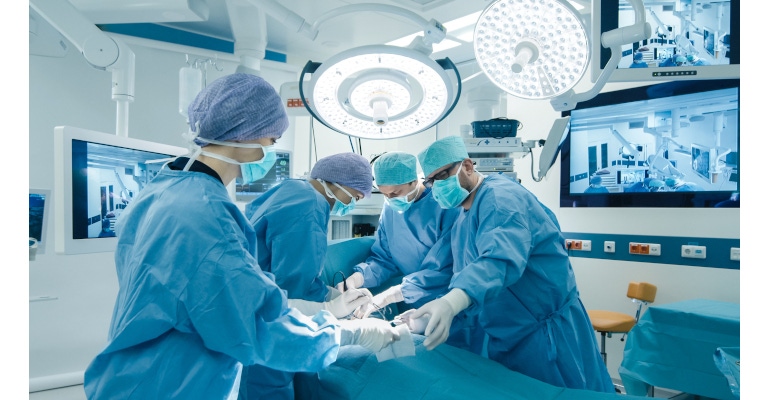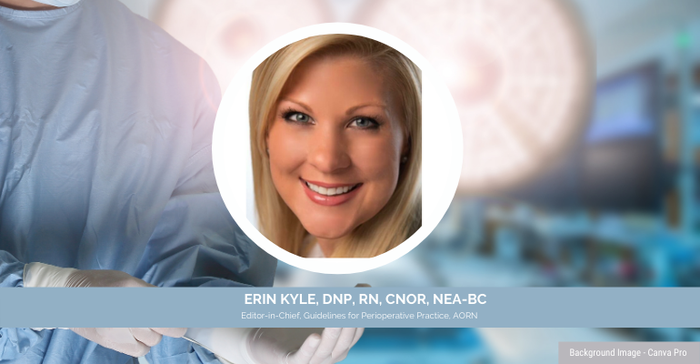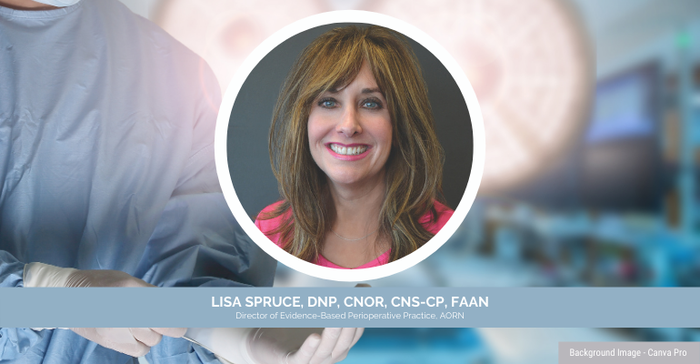Revisions were made to guidelines for laser safety, electrosurgical safety, pneumatic tourniquet safety, instrument care and cleaning, care of the patient receiving local-only anesthesia, and specimen management.
February 17, 2021

The Association of periOperative Registered Nurses (AORN)’s 2021 Guidelines for Perioperative Practice is out, with six revised guidelines. Published each January, the document includes 34 guidelines that offer evidence-based recommendations promoting safe perioperative patient care and workplace safety. The latest edition includes revisions to guidelines for laser safety, electrosurgical safety, pneumatic tourniquet safety, instrument care and cleaning, care of the patient receiving local-only anesthesia, and specimen management.
A few of the updates could impact medical device companies. MD+DI asked the AORN team a few questions. Below we share feedback from Erin Kyle, DNP, RN, CNOR, NEA-BC, editor-in-chief, Guidelines for Perioperative Practice; Lisa Spruce, DNP, CNOR, CNS-CP, FAAN, director of evidence-based perioperative practice; Mary Alice Anderson, MSN, RN, CNOR, perioperative practice specialist; and Julie Cahn, DNP, RN, CNOR, RN-BC, ACNS-BC, CNS-CP; senior perioperative practice specialist.
What steps can manufacturers of surgical instruments and devices take to ensure proper instrument processing?
Kyle: When designing surgical instruments, manufacturers should prioritize functionality, durability, and cleanability equally. Testing cleaning of medical devices under worse-case conditions when pursuing FDA clearance is essential, and using the information learned in this testing should inform care and cleaning instructions for use.

What support can they offer to help personnel use objective measurement tools to monitor the quality of water used in instrument processing and to also use objective measurements to evaluate cleaning effectiveness?
Kyle: The IFU should give detailed information about all aspects of instrument cleaning from point-of-use treatment, through manual and mechanical cleaning processes, inspection, assembly, packaging, and sterilization. The quality of water used in instrument cleaning is an important element that influences the effectiveness of cleaning. Manufacturers of surgical instruments and other reusable medical devices should include the importance of water quality when providing education and in-service for sterile processing personnel.
Are there any design recommendations?
Kyle: When designing surgical instruments and other reusable medical devices, manufacturers should include cleanability, including consideration for human factors for the device. An instrument that is not cleanable cannot be effectively sterilized, and the consequences of cleaning and sterilization failures can lead to catastrophic harm to patients from surgical-site infections.
What steps can manufacturers of electrosurgical and laser devices take to promote safe use?
Spruce: AORN recommends that perioperative personnel follow the manufacturer’s instructions for use for all electrosurgical or laser devices being used. It is important for manufacturers to provide a comprehensive instruction manual that includes details about how to set up the device and safety information that will protect patients as well as perioperative team members. Additionally, manufacturers should have detailed troubleshooting information, frequently asked questions, and other pertinent information and support readily available. Manufacturer representatives should be available for phone or in-person consultations as well as to educate perioperative teams when new equipment is being implemented. Additionally, FDA has listed requirements that manufacturers should include in device instructions for use.

Are there any design recommendations?
Spruce: No, but because qualified personnel (e.g., a biomedical engineering services representative) must perform periodic monitoring, inspection, testing, and maintenance on the electrosurgical generator, the manufacturer’s instructions for use are of the utmost importance. Additionally, FDA has developed guidance documents to assist industry in preparing premarket notification of new devices that includes a description of the device’s design. Manufacturers would provide a brief description of the device’s operating principle(s) and mechanism of action for achieving the intended effects. If perioperative team members suspect an ESU may have caused a serious patient injury or death, personnel should follow their facility’s policies and procedures to report the event to FDA and, if known, the device manufacturer. Device malfunctions also may be reported to FDA.
Are there any suggestions on design or function of pneumatic tourniquets?
Anderson: It would be great to see all non-latex tourniquet cuffs that are more flexible, with built in padding and a clear cover that follows the same direction of the cords to the machine, with potentially longer sterile cords that go to the machine. I would also think that retractable cords would be beneficial, maybe an antibacterial coating around the cord plug. As for the machine, I think that some way to distinguish visually and audibly for right/left or upper/lower extremities alerts would be beneficial. Also, CO2 or O2 levels measured within the cuff or on a pulse oximeter with different alerts.
Here is a summary of recommendations:
Flexible to different limb sizes
Built-in padding (even sterile)
Built-in clear cover—same direction of cords—prevents multiple problems
Longer sterile tubing—could go all the way to the machine?
No latex
Distinguish side
Voice for alarm—distinguish side R/L or U/L
Retractable cords
Antibacterial coating for cords
Sensory for O2—sensor for CO2 for peds as well

Are there any steps manufacturers can take to help monitor pediatric patients for respiratory acidosis during procedures where pneumatic tourniquets are used?
Anderson: Unfortunately, respiratory acidosis signs and symptoms may not be seen with anesthesia; common symptoms include headache, anxiety, confusion, flushed skin. Blood gas tension measured by an arterial line is also expensive and time-ineffective for short cases; however, any case over 75 minutes may benefit. There is one article that discussed a cuff that was able to measure CO2 pH levels in the blood, and that technology, along with O2 to measure limb occlusion pressure, may be beneficial to OR staff and protect patients from the risk of respiratory acidosis.
Here is a summary of symptoms to monitor:
Raised CO2 pH levels in blood - PaCO2 >45 mmHg, pH <7.35
Awake symptoms - headache, memory loss, anxiety or personality changes, confusion, drowsiness, stupor, muscle jerking, reduced heart muscle function for chronic - arrhythmias, drop blood pressure
More - muscle twitching, warm, flushed skin, nausea, vomiting,
Blood gas tension measured by ABGs/arterial line in literature if tourniquet expected >75 min

What can manufacturers do to support safe specimen management, such as handling of highly infectious specimens as well as radioactive seed localization specimens?
Cahn: Manufacturers of products involved in specimen containment and labeling should be aware of the common types of specimen errors. The 2021 AORN Guideline for Specimen Management contains a table (Table 7) that outlines the types of specimen errors that occur in the preanalytical phase (i.e., before the specimen reaches the pathology laboratory). Examples of common types of errors include problems during collection (e.g., wrong container used, wrong solution used), container labeling (e.g., missing labels, wrong information on the label), storage (e.g., not refrigerated), transport (e.g., leaking or spilled solution), and quality (e.g., quantity not sufficient). Specimen errors are more likely to occur in the preanalytical phase of specimen management when compared to the analytical and postanalytical phases. When possible, manufacturers should consider if design modifications in their products may:
Reduce any type of specimen errors (e.g., identification, labeling),
Decrease personnel exposures to hazardous chemicals (e.g., formaldehyde),
Reduce personnel exposures to radioactive material (if applicable),
Reduce personnel exposures to blood or other potentially infectious material,
Decrease the potential for injuries to personnel from sharps contained within specimens (e.g., clips, markers, or wires in breast cancer specimens), and
Facilitate transport, storage, and processing of the specimen (e.g., pathology laboratory, radiology department, nuclear medicine department).
Additionally, manufacturers with products that support specimen management should consider whether technological advances could be imbedded into the design to help reduce specimen errors (e.g., point-of-care bar code systems, radio-frequency identification [RFID]).
Recommended processes for containment, labeling, and transfer of highly infectious specimens are not dramatically different from normal specimen management procedures. Manufacturers of products used in containment of highly infectious specimens may want to consider that personnel may be disinfecting the exterior portion of the specimen container. Therefore, making the device easy to disinfect and compatible with EPA-registered disinfectants commonly available in healthcare facilities may be beneficial. The differences in management of highly infectious specimens is rooted in enhanced communication regarding the specimen.
Medical use of radioactive materials (e.g., seeds) is regulated by the Nuclear Regulatory Commission (NRC). Due to the NRC or applicable agreement state regulations, it is important to account for all radioactive seeds. If there is ever a question about the location of a seed, a radiographic film of the specimen may be taken to verify whether the seed is in the specimen. This may occur when the specimen is already in a container. Therefore, use of non-radiopaque specimen containers may be helpful in containment of specimens containing radioactive seeds.
I see that the Guidelines for Perioperative Practice are revised each year. Is there a process for medical device manufacturers to be involved with to support safe perioperative patient care and achieve workplace safety?
Spruce: Yes, the AORN Guidelines for Perioperative Practice provide the foundation for professional, evidence-based, perioperative nursing practice. Every perioperative team member as well as industry partners have a responsibility to actively participate in the development and review of professional guidelines. This participation is achieved through the public commenting process. Manufacturers can read and review every guideline and provide comments. Input received from perioperative team members and other stakeholders strengthen the guidelines because they provide AORN with input from team members practicing in a wide variety of facilities, specialties, roles, and locations throughout the United States and other countries.
About the Author(s)
You May Also Like




.png?width=300&auto=webp&quality=80&disable=upscale)